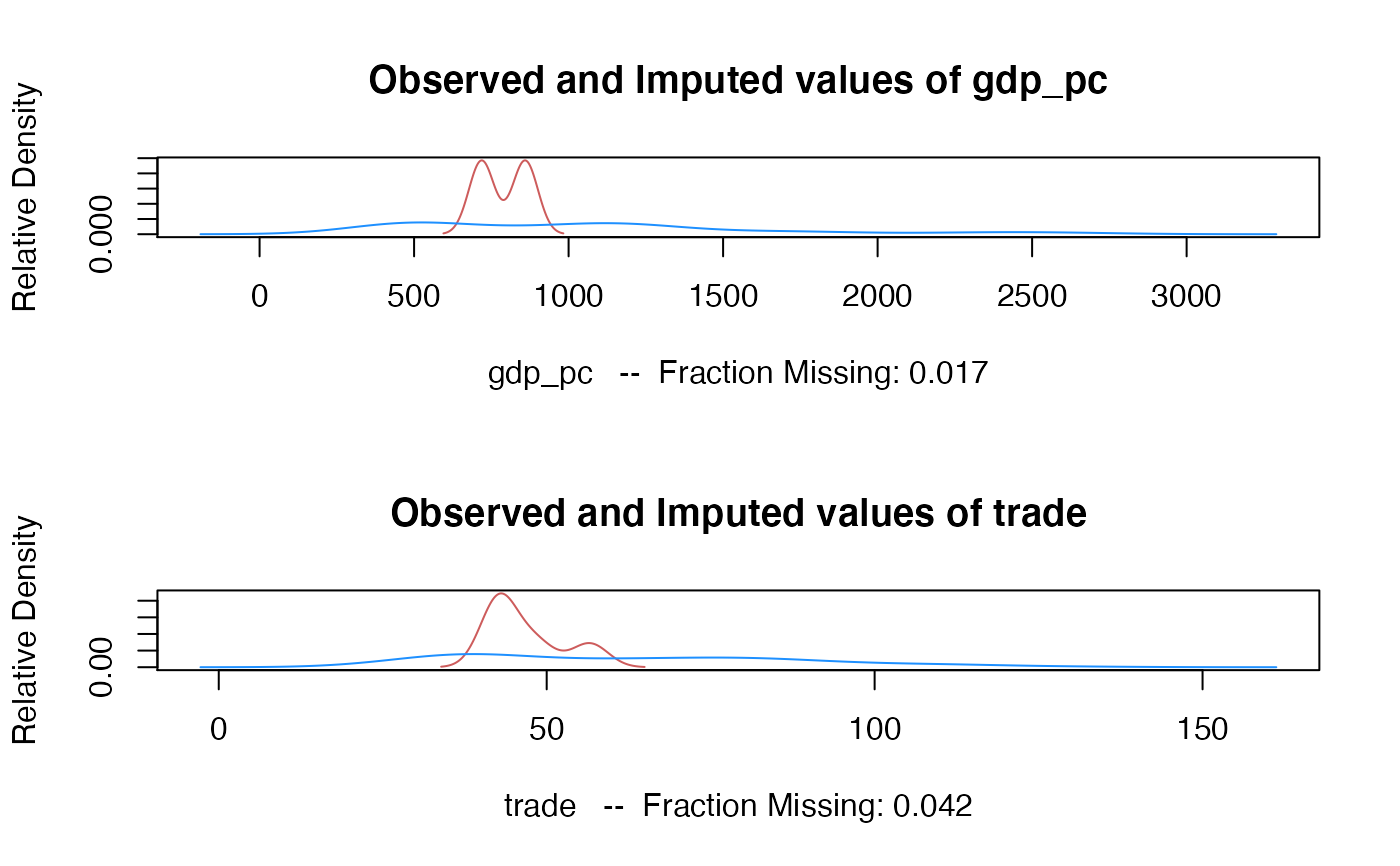Combine multiple runs of Amelia
ameliabind.RdCombines multiple runs of amelia with the same
arguments and data into one amelia object.
ameliabind(...)
Arguments
| ... | one or more objects of class |
|---|
Value
An object of class amelia.
Details
ameliabind will combine multiple runs of amelia into one
object so that you can utilize diagnostics and modelling on all the
imputations together. This function is useful for combining multiple
runs of amelia run on parallel machines.
Note that ameliabind only checks that they arguments and the
missingness matrix are identical. Thus, it could be fooled by two
datasets that are identical up to a transformation of one variable.
See also
Examples
#> -- Imputation 1 -- #> #> 1 2 #> #> -- Imputation 2 -- #> #> 1 2 #> #> -- Imputation 3 -- #> #> 1 2 3 #> #> -- Imputation 4 -- #> #> 1 2 #> #> -- Imputation 5 -- #> #> 1 2 3 #>#> -- Imputation 1 -- #> #> 1 2 3 #> #> -- Imputation 2 -- #> #> 1 2 3 #> #> -- Imputation 3 -- #> #> 1 2 3 #> #> -- Imputation 4 -- #> #> 1 2 #> #> -- Imputation 5 -- #> #> 1 2 3 #>#> #> Amelia output with 10 imputed datasets. #> Return code: 1 #> Message: Normal EM convergence #> #> Chain Lengths: #> -------------- #> Imputation 1: 2 #> Imputation 2: 2 #> Imputation 3: 3 #> Imputation 4: 2 #> Imputation 5: 3 #> Imputation 6: 3 #> Imputation 7: 3 #> Imputation 8: 3 #> Imputation 9: 2 #> Imputation 10: 3 #> #> Rows after Listwise Deletion: 115 #> Rows after Imputation: 120 #> Patterns of missingness in the data: 3 #> #> Fraction Missing for original variables: #> ----------------------------------------- #> #> Fraction Missing #> year 0.00000000 #> country 0.00000000 #> gdp_pc 0.01666667 #> infl 0.00000000 #> trade 0.04166667 #> civlib 0.00000000 #> population 0.00000000 #>
